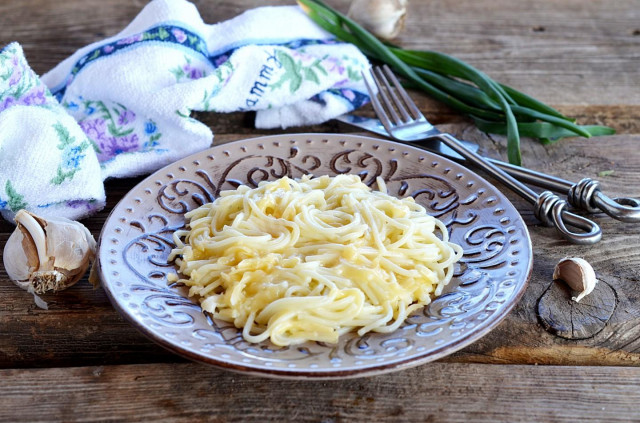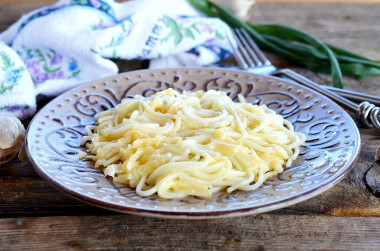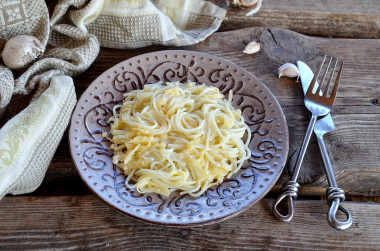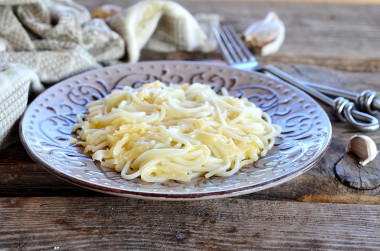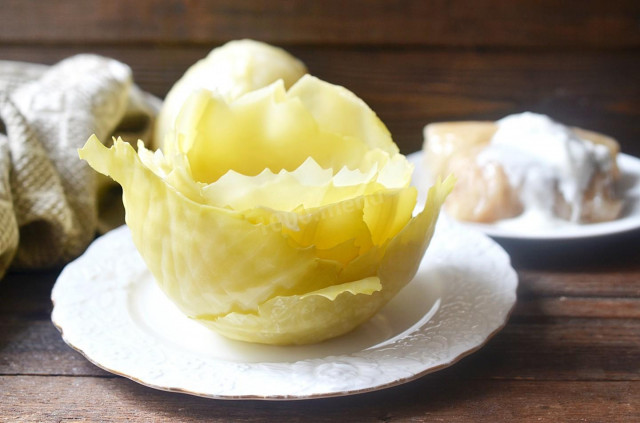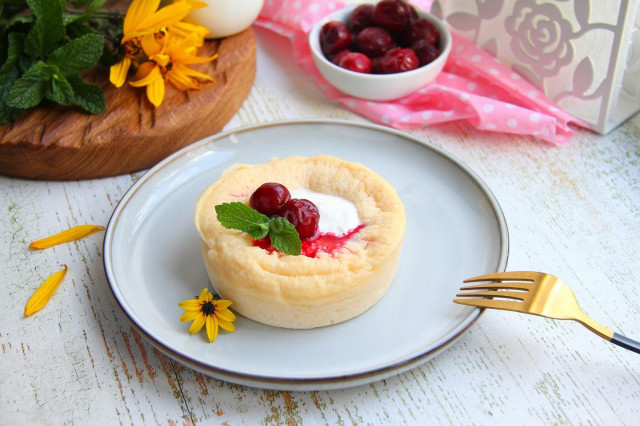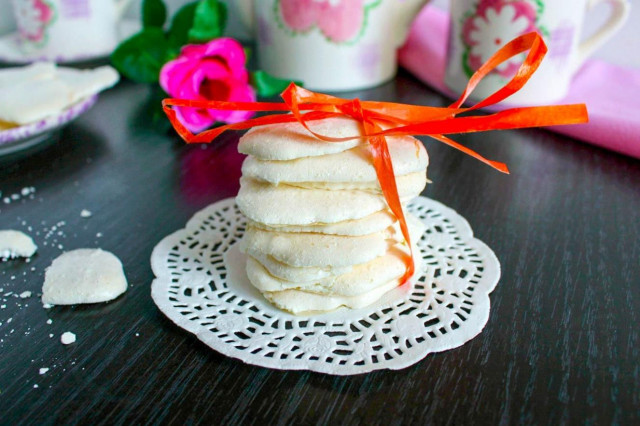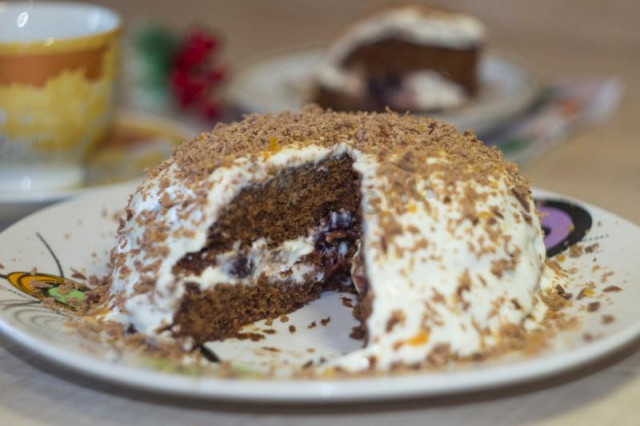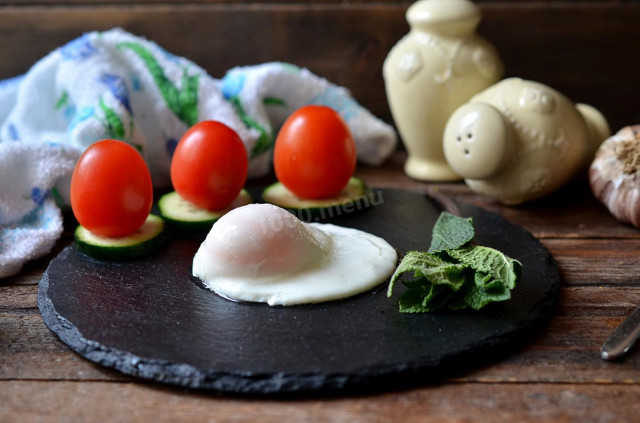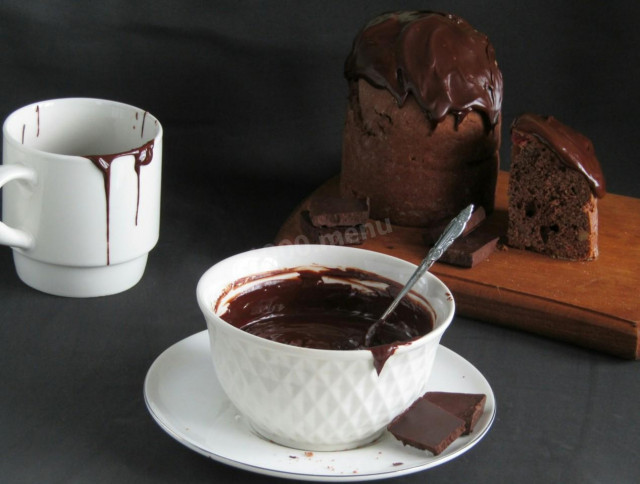Composition / ingredients
Step-by-step cooking
Step 1:
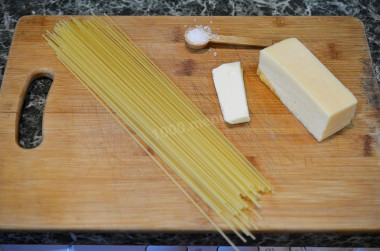
Prepare all the necessary products. Pasta will fit any shape: fusilli, penne, concilloni, bows and others. But be sure to take pasta from durum wheat - they are much healthier. I have spaghetti - my children love them the most, but I will break them into several pieces. Also, for cooking in the microwave, I recommend pasta, which is cooked for a short time. Cheese can be of any variety: both hard and soft, mozzarella and even cheese with mold.
Step 2:
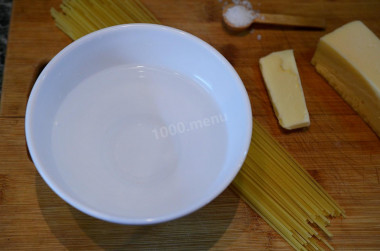
Prepare dishes that can be used in a microwave oven. Let me remind you that you can not take metal dishes and dishes with a gilded pattern. But ceramic, porcelain and glass are perfect. Take the dishes deep enough, because in fact pasta will be cooked in it. Pour filtered or bottled water into the dishes in which you will cook pasta.
Step 3:
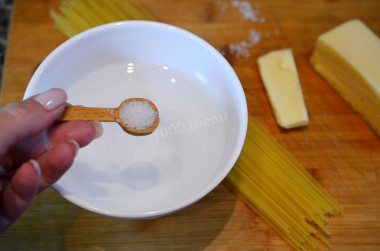
Salt the water.
Step 4:
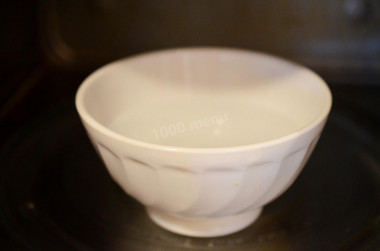
Put in the microwave for 5 minutes at a power of 1000. Pasta is usually put in boiling water, so we need to bring the water to a boil.
Step 5:
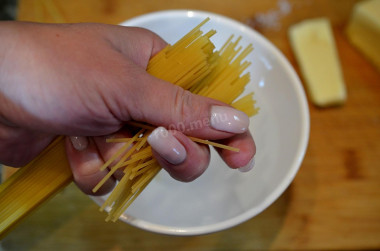
Take out a bowl of boiling water and add pasta to it. As you can see, I broke the spaghetti into 3 pieces, otherwise they just wouldn't fit into the bowl. Return the pasta dishes to the microwave and cook at a lower power (optimally 400-600). We choose the time as follows: add 2 minutes to the time indicated on the package. That is, if it is indicated on the package that the pasta should be cooked for 7 minutes, then the cooking time in the microwave will be 9 mi
Step 6:
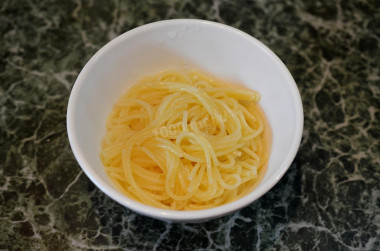
This is how the pasta looks after cooking in the microwave.
Step 7:
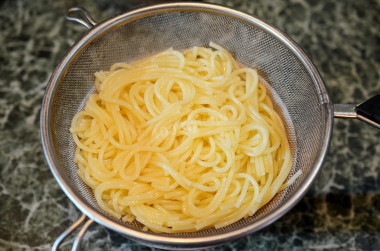
But there may be some liquid left, so throw them on a sieve.
Step 8:
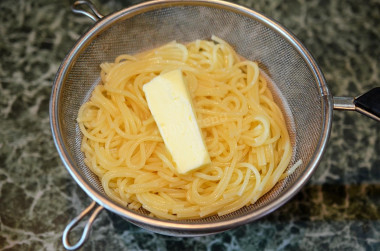
Add butter and mix well.
Step 9:
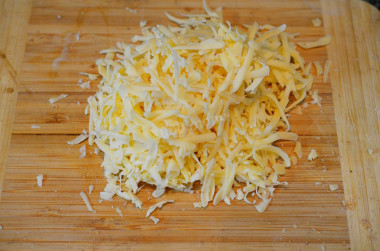
Meanwhile, grate the cheese on a grater of any size.
Step 10:
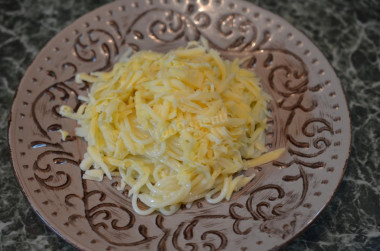
Sprinkle the finished pasta with grated cheese and serve immediately. If suddenly your pasta has cooled down a little, then put a plate with a dish in the microwave for 1 minute so that the cheese melts.
Step 11:
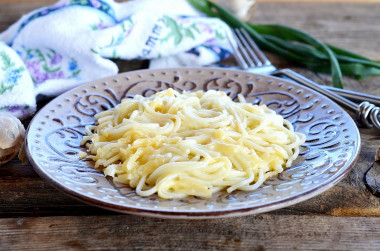
Bon appetit!
Calorie content of the products possible in the composition of the dish
- Pasta, premium grade, fortified - 337 kcal/100g
- Pasta, premium, dairy - 309 kcal/100g
- Pasta, premium grade, egg - 342 kcal/100g
- Pasta made from flour of the 1st grade - 333 kcal/100g
- Pasta made of flour in / with - 338 kcal/100g
- Boiled pasta - 135 kcal/100g
- Pasta - 338 kcal/100g
- Dutch cheese - 352 kcal/100g
- Swiss cheese - 335 kcal/100g
- Russian cheese - 366 kcal/100g
- Kostroma cheese - 345 kcal/100g
- Yaroslavsky cheese - 361 kcal/100g
- Altai cheese 50% fat content - 356 kcal/100g
- Soviet cheese - 400 kcal/100g
- Cheese "steppe" - 362 kcal/100g
- Uglich cheese - 347 kcal/100g
- Poshekhonsky cheese - 350 kcal/100g
- Lambert cheese - 377 kcal/100g
- Appnzeller cheese with 50% fat content - 400 kcal/100g
- Chester cheese with 50% fat content - 363 kcal/100g
- Edamer cheese with 40% fat content - 340 kcal/100g
- Cheese with mushrooms of 50% fat content - 395 kcal/100g
- Emmental cheese with 45% fat content - 420 kcal/100g
- Gouda cheese with 45% fat content - 356 kcal/100g
- Aiadeus cheese - 364 kcal/100g
- Dom blanc cheese (semi-hard) - 360 kcal/100g
- Lo spalmino cheese - 61 kcal/100g
- Cheese "etorki" (sheep, hard) - 401 kcal/100g
- White cheese - 100 kcal/100g
- Fat yellow cheese - 260 kcal/100g
- Altai cheese - 355 kcal/100g
- Kaunas cheese - 355 kcal/100g
- Latvian cheese - 316 kcal/100g
- Limburger cheese - 327 kcal/100g
- Lithuanian cheese - 250 kcal/100g
- Lake cheese - 350 kcal/100g
- Gruyere cheese - 396 kcal/100g
- Butter 82% - 734 kcal/100g
- Amateur unsalted butter - 709 kcal/100g
- Unsalted peasant butter - 661 kcal/100g
- Peasant salted butter - 652 kcal/100g
- Melted butter - 869 kcal/100g
- Salt - 0 kcal/100g

